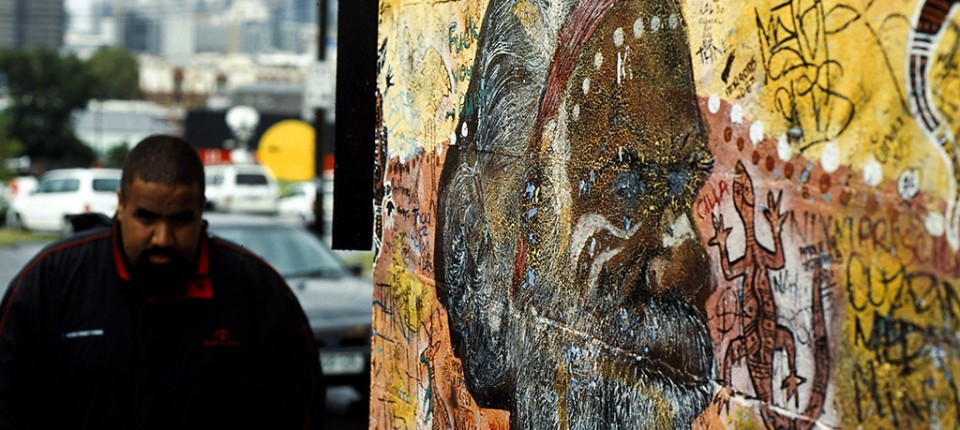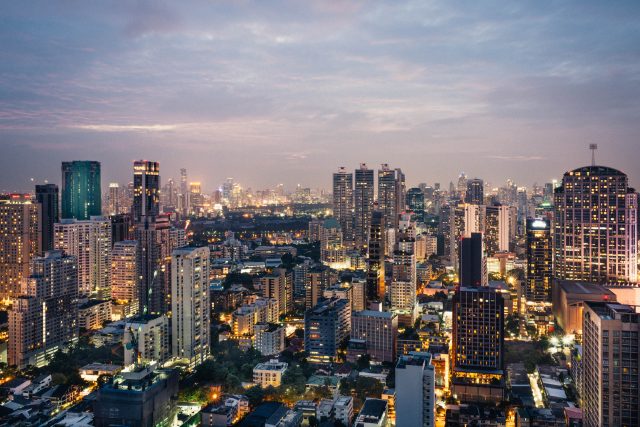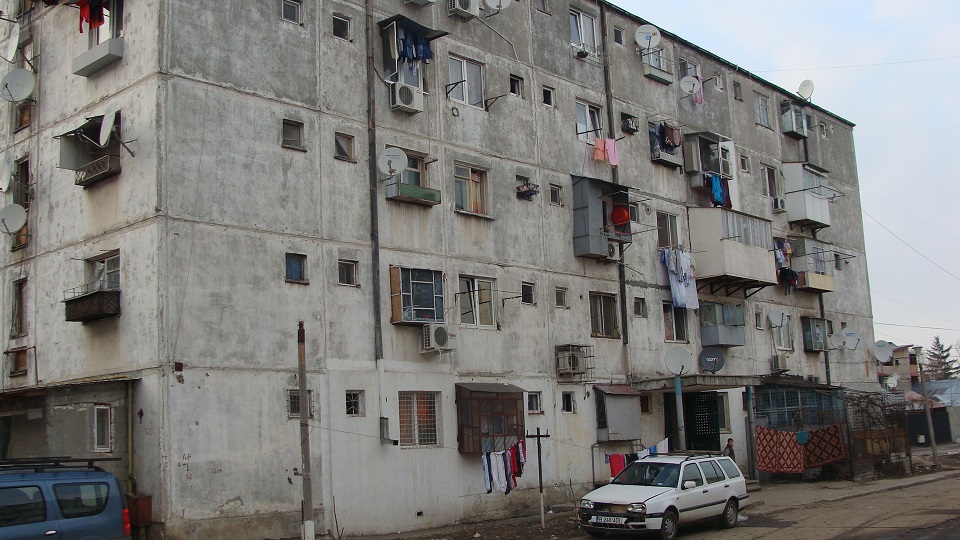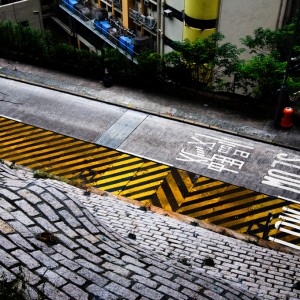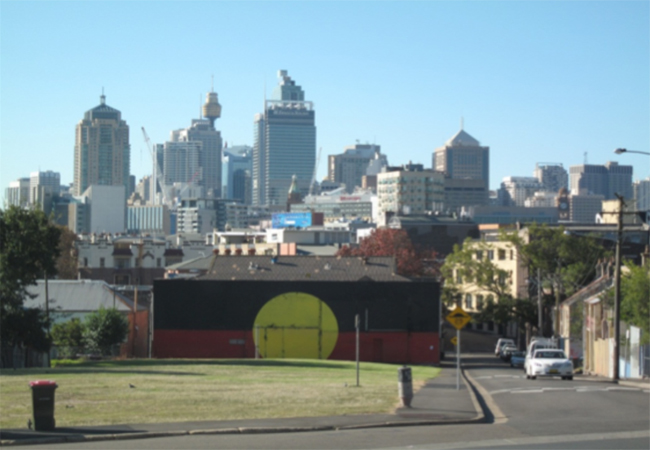
The Block in Redfern, minutes away from Sydney’s central business district. The Aboriginal flag in the centre signifies the strong presence and cultural ties of the area’s indigenous people. (Photo: Matt Smith)
Almost everyone living in Sydney knows much about Redfern and the surrounding suburbs just south of Sydney’s central business district. These inner-city neighbourhoods are not far removed from the icons of Sydney harbour: Harbour Bridge, Sydney Opera House, sun–blessed beaches.
The Block, an area lying close to the heart of Redfern, represented the first urban land rights claim of Australian Aboriginals, when the government of former Prime Minister Gough Whitlam deeded the area to the Aboriginal Housing Company (AHC) in the early 1970s. The area was occupied largely by indigenous people living in subsidised social housing.Many non–indigenous Australians perceive this area as being plagued by poverty, substance abuse, and social unrest. The 2004 riots in the area were a stark reminder of the problems between some citizens and the local police. Time Out Sydney profiled the area in 2008, questioning whether it is an ‘urban slum, Aboriginal icon, or real estate goldmine’. Only a small number of the terrace houses in the area are still inhabited, as master plans are debated and finalised. There is a conflict between how much of The Block is to be developed as private housing and how much should be allocated as affordable public housing. Local residents tied to the area’s heritage and cultural roots fight to ensure that The Block does not ultimately descend into another case of real estate speculation.
Luxury real-estate developments have come about in The Block due to city-initiated urban renewal programmes. It is an immense challenge for Sydney to ensure an adequate supply of affordable housing. High levels of property speculation have accompanied urban renewal, bringing about uneven development levels that have widened the gap between Sydney’s rich and poor demographics. In Australia, public housing subdivisions are available to the society’s disadvantaged, but demand far outweighs the supply and the developments bear poor reputations in high-crime neighbourhoods. Renewal programmes in Sydney are generally accompanied by extensive gentrification. This comes with changes in the patterns of land use in this, the former manufacturing heartland of Sydney where capital flows have since been reallocated to the real estate sector. Over time, property prices increased sharply, generating substantial capital gains for a select few of Sydney’s firms.
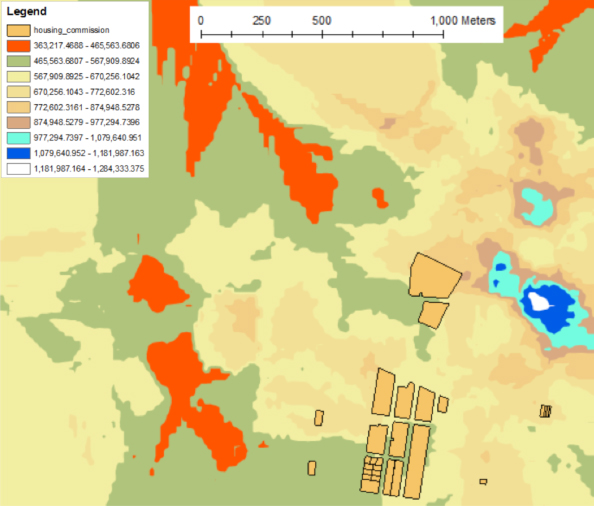
Median Property Prices in Redfern, Surry Hills, Darlington (2005 – 2007)
Data: Australian Property Monitors
The problem is that market factors facilitate the speculation process, generating gains which are not beneficial to all Sydneysiders, contributing to growing social economic disadvantage and spatial inequality in an area. Variation in property prices around The Block in Redfern and reflects how prices vary significantly around public housing subdivisions in the area. Researchers have located the phenomenon outside of Australia as well, including in Virginia where each invested dollar in urban renewal increases property value between $2 – $6.
As some areas of our cities are invested in and improved upon, others are neglected and, consequently, disadvantaged neighbourhoods lie closer and closer to the more affluent areas. The disadvantaged areas around Redfern contain many high-rise public housing apartment blocks that have not benefitted from any substantial form of renewal.
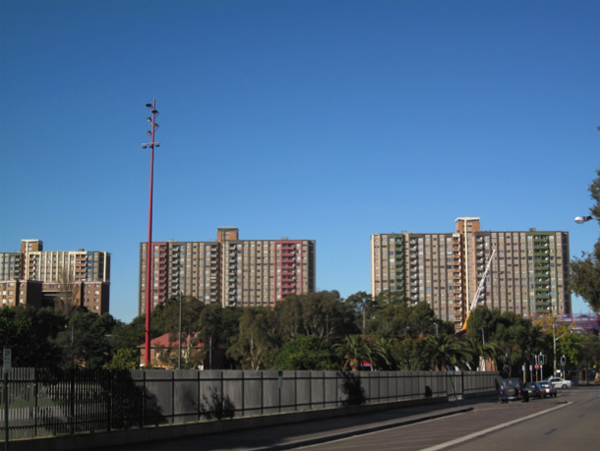
Large public housing subdivisions spread across this part of Sydney lie next to trendy new developments in the area. Urban renewal programmes have exacerbated spatial inequality in adjoining neighbourhoods. (Photo: Matt Smith)
Years of urban renewal, though, has transformed Sydney’s urban landscape around public housing subdivisions. Such programmes have led to better public service provisions for the community in addition to strengthened transportation infrastructure. Other neighbourhoods in Sydney outside of The Block, however, do not suffer from the notorious history of poverty and urban decay.
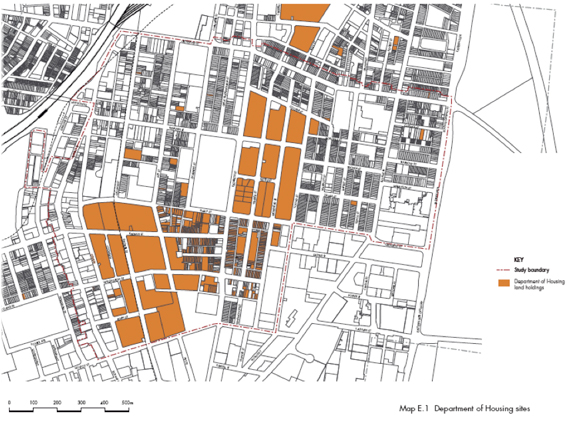
Major Public Housing Concentrations across Redfern, Darlington, Surry Hills
Data: NSW Department of Housing
The existence of spatially dispersed public housing across this part of Sydney is an example of how urban renewal transforms the fabric of our cities. Government planning authorities have implemented a range of strategies facilitating investment with the broad objective of increasing urban amenity in these areas.
Sydney desperately requires efforts to curb property speculation through extensive policy reform. In Australia, the federal government has massively subsidised property owners through negative gearing policies that have helped maintain unsustainably high property values. Real estate investors can offset the difference between what they gain in income from the property and what the repayments are on their mortgages as a tax deduction. Calls to abolish negative gearing bring about significant resistance.
For the moment, The Block in Redfern is still viewed as a slum, icon, or a goldmine. Yes, urban renewal programmes have brought about much needed transformation to many places in this part of Sydney. For now, The Block is an area that reflects an opportunity for stakeholders to do what is needed to develop a better future for Sydney. Good city planning ensures that communities can be integrated, and that heritage and cultural areas lie at the top of the planning agenda. Feagin highlights that property speculation unnecessarily creates uneven development in our cities. The planning system in Sydney has yet to recognise the way in which market factors alter the housing market in response to urban renewal. A better future for Sydney will only happen through better stakeholder dialogue and policy reforms, which counteract spatial inequality by ensuring that neighbourhoods are diverse and as liveable as possible.

